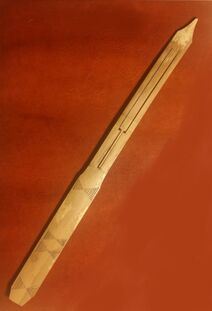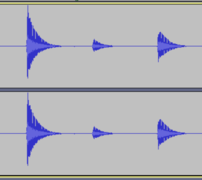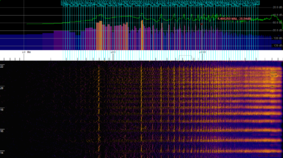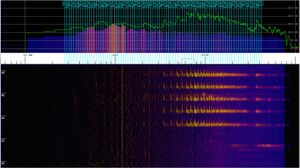Course:Phys341 2020/Kumbing

The Kumbing is a native jaw harp made of bamboo found in the southern region of the Philippines. Jaw harps are plucked idiophones (which are musical instruments that create sounds through the entire instrument vibrating without the strings or membranes) and lamellophones . These small instruments create various sounds that differ depending on the resonance cavity (in this case, the mouth or ‘jaw’). Jaw harps can be found all around the world made of either metal, or wood with its various names (ie. jew’s harp, kouxian, etc.)
History
Now used mostly for recreation, the kumbing was used in intimate settings for courtship. It was a method a man and woman would use to communicate and express their love without their parents knowing especially when they are opposed to the relationship. In the T’boli tribe, the kumbing would be played during a lunar eclipse. According to Philippine mythology, the lunar eclipse was caused by a moon-eating creature that would attempt to eat the moon. It was believed by the T’boli people that the kumbing would persuade the creature to release the moon back into the sky.
How to play
With the epidermis side facing out, the kumbing is held at the base between the thumb and forefinger. The instrument is placed between the lips at the thinner part of the reed. With the other hand, (often) the thumb strikes the point of plucking to create the sound. Changes in the shape of the oral cavity affect the sound and the overtones produced by the instrument. Watch my demonstration here.
Physics of the Kumbing
Note that these measurements are applicable to a 24.5 cm kumbing with a tongue length of 11 cm [as in figure 1.0].

The kumbing instrument produces sound as with a bar clamped at one end with a displacement node occurring between the point of plucking and the tongue. The fundamental frequency of the kumbing (without the oral cavity to affect the harmonic series) is at about 70 Hz shown in Figure 1.1. The second harmonic (~140 Hz) is missing and the following odd-numbered harmonics are relatively weaker than its even counterparts as it is similar to an closed-open tube. The onset duration of each pluck lasts about 0.5 seconds ± 0.1 depending on strength of plucking (varying volumes). In addition to its short length, there is high tension that keeps the tongue in place creating the fast decay rate of sound. This decay rate does not change drastically with or without the presence of the oral cavity.


As with Helmholtz resonators, when the resonance cavity (that is the oral cavity) has more space available for longer sound waves travel to in, the kumbing creates sounds with lower frequencies. Using different mouth shapes and vowels, one can create various and interesting sounds. For example, while holding one's breath, the 'o' vowel's lowest frequency is at 210 Hz however faint with its loudest frequency at around 770 Hz. [figure 2.0] On the other the 'i' vowel [figure 2.1] which is a closed vowel (ie. less resonance space), has its loudest frequencies near the 2 kHz range.
When a player breathes in and out, the space in the resonance cavity becomes wider and hence so does its amplitude along a wide range of the lower frequencies from 280 Hz to 1 kHz. Similar to when the player holds their breath, its peak frequencies still vary with the open vowels having louder frequencies on the lower end while the closed, tight vowels having greater amplitude in higher frequencies.

